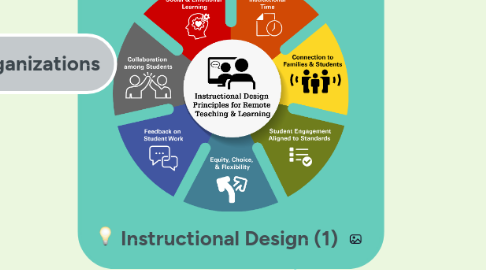
1. Organizations
1.1. Government
1.1.1. A government is the system or group of people governing an organized community, generally a state. In the case of its broad associative definition, government normally consists of legislature, executive, and judiciary. Government is a means by which organizational policies are enforced, as well as a mechanism for determining policy.
1.2. Corporation
1.2.1. usually a group of people or a company—authorized by the state to act as a single entity (a legal entity recognized by private and public law "born out of statute"; a legal person in legal context) and recognized as such in law for certain purposes.
1.3. Military
1.3.1. A military, also known collectively as armed forces, is a heavily armed, highly organized force primarily intended for warfare. It is typically officially authorized and maintained by a sovereign state, with its members identifiable by their distinct military uniform.
1.4. Higher Ed
1.4.1. Higher education, also called post-secondary education, third-level or tertiary education, is an optional final stage of formal learning that occurs after completion of secondary education.
1.5. K12
1.5.1. from kindergarten to 12th grade, is an American expression that indicates the range of years of publicly supported primary and secondary education found in the United States, which is similar to publicly supported school grades before college in several other countries, such as Afghanistan, Australia, Canada, China, Ecuador, Egypt, India, Iran, the Philippines, South Korea and Turkey.
2. Tools
2.1. Process
2.1.1. A process is a series or set of activities that interact to produce a result; it may occur once-only or be recurrent or periodic.
2.2. Theory
2.2.1. A theory is a rational type of abstract thinking about a phenomenon, or the results of such thinking. The process of contemplative and rational thinking is often associated with such processes as observational study or research.
2.3. Physical
2.3.1. Physics is one of the most fundamental scientific disciplines, and its main goal is to understand how the universe behaves.
3. People
3.1. Management
3.1.1. is the administration of an organization, whether it is a business, a not-for-profit organization, or government body.
3.2. ID Teams
3.2.1. is the identification of oneself with a generalized image of a member of a social group or community, due to which there is an acceptance, often uncritical, of its goals and values.
3.3. SMEs
3.3.1. Small and medium-sized enterprises (SMEs) or small and medium-sized businesses (SMBs) are businesses whose personnel numbers fall below certain limits. The abbreviation "SME" is used by international organizations such as the World Bank, the European Union, the United Nations and the World Trade Organization (WTO).
3.4. Learners
3.4.1. is a person who is engaged in a particular activity. This case can be a lesson or an activity that the person is interested in. The student is engaged in mastering one case. He will be called a disciple until he has mastered this business to the highest level.
